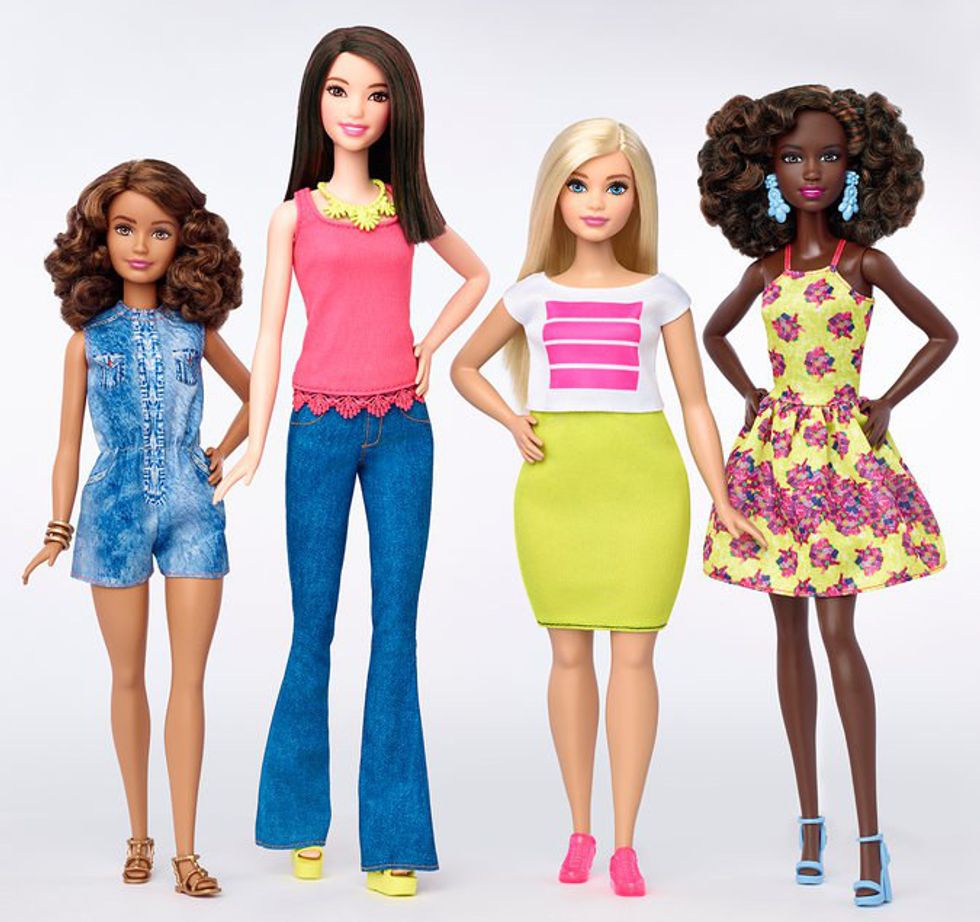Everything in consumer culture is socially constructed, from toys to clothes. Ideas of how our bodies should be come from current trends and celebrity endorsements. We've all seen the celebrity endorsed weight-loss ads. There is no escaping this metaphorical mirror that follows us around and mirrors all of our insecurities. Young girls are told to be delicate princesses who should play with their dolls and be happy. Not only does this force gender roles on children, but it sets an unrealistic body image for these girls to idolize because most of their dolls will be extremely thin. However, Mattel unveiled three new revolutionary Barbie body types: Curvy, petite, and tall.
Why this huge change in Barbie's appearance? Because Mattel is trying to align Barbie's features with the features that real women have in today's society. Kudos to Mattel. A curvy, petite, and tall Barbie matters because toys should be inclusive and diverse. In the age of Internet, it was basically impossible for Mattel to disregard this call for change. I remember playing with my Barbie dolls when I was a child and noting the obvious differences between their bodies and mine. Most of my dolls were Caucasian, blue eyed with blonde hair, and had long legs. As for me, I've always been short and curvy with brown eyes, brown hair, and brown skin. Yet, I accepted it. My 5-year-old self assumed that this is what women should look like.
For 57 years, Mattel has been making and selling dolls with the same body type, but finally they have created a body that mirrors what girls see. Now, young girls (or boys) can play with dolls that actually look like their moms, aunts, or sisters. This is more than just an overdue makeover that needed to take place decades ago, but it is a shift in social norms. This gives me hope that the world, especially America, is moving towards a society that embraces differences among individuals, especially women. A new Barbie doesn't change the world, but this influential toy brand has revolutionized the future of dolls.








 StableDiffusion
StableDiffusion Photo by
Photo by  Photo by
Photo by 
 full parking
StableDiffusion
full parking
StableDiffusion









